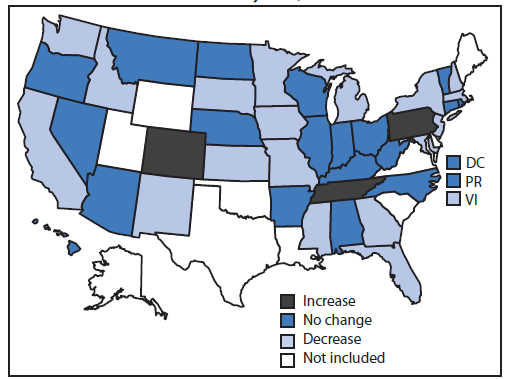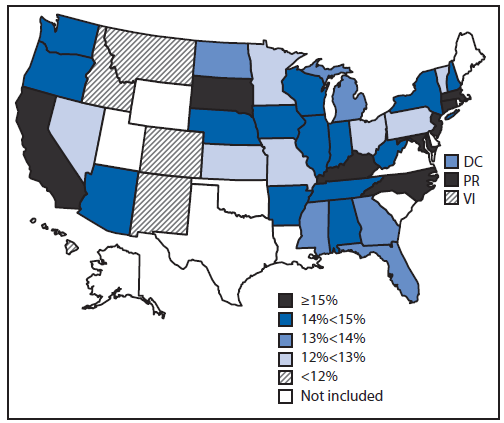* Dalenius K BE, Smith B, Polhamus B, Grummer-Strawn L. Pediatric nutrition surveillance 2010 report. Atlanta, GA: US Department of Health and Human Services, CDC; 2012.
† CDC. Pediatric Nutrition Surveillance Sytem. Atlanta, GA: US Department of Health and Human Services, 2013. Available at http://www.cy118119.com/pednss/pednss_tables/pdf/national_table12.pdf.
§ Kuczmarski RJ, Ogden CL, Guo SS, et al. 2000 CDC growth charts for the United States: methods and development. Vital Health Stat 11 2002;(246). Available at http://www.cy118119.com/nchs/data/series/sr_11/sr11_246.pdf.
¶ Additional information available at http://www.cy118119.com/nccdphp/dnpa/growthcharts/resources/biv-cutoffs.pdf.
** Additional information available at http://www.letsmove.gov/mayors-local-officials.
†† Additional information available at http://www.letsmove.gov/white-house-task-force-childhood-obesity-report-president.
 ShareCompartir
ShareCompartir




